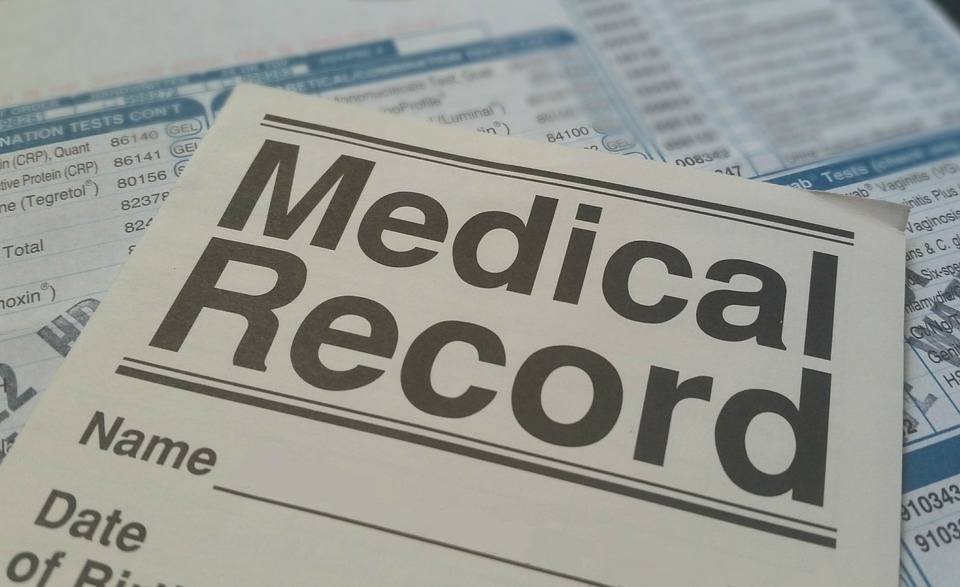No matter if you are a fitness instructor, wellness mentor, or nutritionist, monitoring clients’ health data can become quickly chaotic. Particularly for people managing a variety of risk factors and medical issues, this stands true.
Neglecting to acquire essential client health information can lead to hazardous sickness effects for your client and lawful problems for you. In this article, discover essential techniques you could employ to remember and maintain critical customer health data.
Retaining and Remembering Important Health Information
You need to complete all the required documentation and have a bunch of records connected to each individual customer ready in one place. But hang on- what is the best way to remember it all without seeming like you are continually skimming through a reference book in each lesson?
Keep a File on Every Client
Remember the “stack of forms” previously mentioned? Be mindful when dealing with paperwork of different clients so that their specific conditions don’t get confused – i.e., not thinking Client A has high blood pressure when they have diabetes, and vice versa for Client B.
Keep every client’s file neat and organized. You do not have to keep physical copies of each customer’s records, even though you could if you prefer.
Rather than relying solely on manual processes, you could rely on applications to simplify the management of your customers’ data. Aside from being more comfortable to use, apps decrease the possibility of confusing one customer’s health information with another’s.
Here’s a list of the top three coaching apps you could consider using:
- Practice Better: A complete practice management app for health and wellness professionals. In addition to tagging each client with specific notes and documents, you could even set up automated reminders and create downloadable resources for your clients. Other notable features include in-app messaging, session, scheduling, and invoice management (amongst others).
- True Coach: Although designed primarily for personal trainers, health coaches and nutritionists could also use True Coach to track client data (including important health information) and schedule coaching sessions.
- Satori: Once again, Satori allows you to track all clients’ health information. Beyond that, though, this powerful CRM software is particularly beneficial to anyone offering remote coaching services. It auto-detects client time zones and does the math for easy session scheduling.
Summarize Key Health Conditions
Every client has their own file. Great! However, this does not take into account the potential of being overwhelmed with data, where looking at a customer’s “documentation” (either in physical or digital form) gives rise to a multitude of manifestations, important things to take into account, and reasons why a certain action might not be wise.
For example, consider if you are a fitness instructor and your client has high blood pressure.
Here’s what your notes could read:
“Client has high blood pressure. It is wiser to stay away from strenuous workouts such as sprinting, powerlifting, plyometrics, and all HIIT training. This type of activity can result in sudden increases in blood pressure, which can put too much strain on the heart and blood vessels. The client should be recommended to take part in light to moderate exercise. The client is taking Angiotensin II Receptor Blockers (ARBs), a type of drug that helps the blood vessels remain dilated. May cause dizziness.”
Yes—it’s a huge chunk of words. That only covers one portion of their health data.
In a lot of situations, you would have to read a few sections that talk about different illnesses and daily living habits. It’s a nightmare. So, what can you do about it?
Make sure you understand the basics of common chronic illnesses (such as diabetes, high blood pressure, hypothyroidism, and heart diseases) and be able to explain the key points in your own words. It is recommended that you record your summarized information somewhere accessible, such as a personal journal, so that it can be easily retrieved when necessary.
If you are having difficulty understanding a particular client’s medical situation?
Don’t hesitate to request a short description from your client. It is likely that their medical professionals would have supplied them with a simple, clear explanation of their health state to pass on to you.
Keep Your Knowledge Up-To-Date
That said, remember to keep your knowledge up-to-date. Making sure your advice and suggestions adhere to the newest health and diet regulations is important for your customer’s healthiness and the prosperity of your company.
Here are a few tips that’ll help you with this:
- Join a professional association: Becoming a member of a professional association (e.g., The National Board of Health and Wellness Coaching or Health Coach Alliance) typically gives you free access to studies and high-quality information relating to health and wellness fields.
- Sign up for authority newsletters: There are two general types of authority organizations. The first is associations and organizations comprised of experts and professionals in certain fields or on a specific topic. Examples of associations and organizations you may want to follow include the American Nutrition Association and the American Public Health Association. The second type of authority organization is government entities responsible for official guidelines and regulations. Examples include the World Health Organization and ChooseMyPlate.
- Complete continued education courses (CECs): Certifying organizations for health and wellness professionals (including AFPA) offer short courses to allow personal trainers, nutritionists, and health coaches to continue their education and keep their knowledge up-to-date. So, do consider getting your CECs if you haven’t already.
Review Client’s Files Before Their Sessions
The “recency effect” is an approach you could use to increase retention of vital customer health details.
People who are uninformed should know this: the recency effect is a mental recollection process in which the most recently heard information, opinions, or things are more easily recollected than the earlier subjects.
So, how do you make use of this, exactly?
Well, remember the “files” you kept on each client? Make certain to go over them just before your mentoring session begins. This will ensure that any relevant health information is easily accessible in your memory.
It is advisable not to set up consecutive sessions with your clientele.
Ensure you have regular intervals of at least 10-20 minutes in between clients in order to look over relevant data concerning the next customer. This will help you to better provide the care they need.
Do Periodic Check-Ins
It is not safe to assume that your client’s well-being (such as different illnesses or lifestyle routines) will stay constant in the long run. This is a situation that could be altered; it could go either way in terms of improvement or detriment.
It could have an impact on the efficiency of the program you create for them.
An example to help clarify: Suppose that you possess the title of Certified Nutrition & Wellness Consultant and the individual you are consulting for is in mostly good health. You have consistently tried to reinforce good dietary practices and make MyPlate-based meal plans for this client, which is the Food Pyramid amended by the government.
Patient Retention Strategies for Your Office
1. Make Appointment Scheduling A Breeze
A dental practice is no place to play hard-to-get. There isn’t often a line of people eagerly waiting to get their teeth cleaned! If it is hard for your patients to make an appointment, they will be disgruntled before they even make it to your practice (or, worse, decide to go elsewhere). It won’t take too much time for someone to set up their appointment on your calendar.
2. Confirm Your Appointments In A New Way
Dispatching an affirmation text is a hassle-free approach to not simply remind someone of their arrangement, but in addition to demonstrate your thankfulness for their patronage. Try thanking them before asking them to confirm. Send your automated messages from a ten digit phone number instead of a brief code for higher open rates. Weave provides an excellent patient appointment reminder solution.
3. Have A Professional Website
It doesn’t have to be extraordinary, but providing useful info and including some photos of yourself, personnel or the office may go a long way to making new patients feel welcome when they phone for the first time. There are some fantastic and reasonably priced website template services available, such as Squarespace.com, that are easy to use. It is likely that your current patients do not have your contact information stored in their cell phone, even though they have contacted you in the past. Ensure that essential data regarding your company is readily attainable such as: your contact number, location, operating hours, and other important information. It is essential that the data on your website’s mobile version is presented in a neat and organized manner.
4. Make Sure Your Website Is Easy To Find
Even repeat customers may not remember your website URL. When your website has a high rank in search engines, it makes it simpler for your patients to access the required data.
5. Make Sure You Have An Updated Google Business Listing
Creating and keeping a Google Business listing helps to guarantee your data pops up instantly in Google searches, and even yields a map listing to make it simpler for customers to get to your clinic. This reveals that you are committed to making life easier for your patients and that you are serious about your advertising.
6. Make Sure You Have An Updated Bing Business Listing
Making sure your information is listed on Google is a fantastic idea, however, you should also make sure it’s visible on Bing since some of your target market may be searching there. Make sure you’ve updated this listing for any person who is not utilizing the Google search engine, even if they make use of Bing.
7. Sit In Your Own Waiting Room For 30 Minutes
Have you ever spent half an hour in a waiting area of your own? Give it a try. By the end of your time, you should have some thought about how to improve the experience.
8. Provide Enough Parking
Providing enough parking spaces is advantageous. Think about designating certain areas in the shared parking lot just for patients.
9. Give Patient Payment Options
The Health Policy Institute of the American Dental Association’s National Survey on Why Adults Refrain from Going to the Dentist reported that 40 percent of adults are not visiting the dentist because of the expense. Think about offering your customers a more practical way to pay by designing your own payment arrangements or utilizing CareCredit.
10. Rethink Your Office Hours
Patients may find it hard to stop by your office during typical business hours. Think about offering your office’s services earlier in the morning or later at night to fit the hours of busy individuals, if feasible, even just a day or two per week. Booking an appointment will be much more convenient for some patients as they won’t need to take leave from their job. It can be complex to plan this out (if they require to look for somebody to take over a change), and it can also lead to a reduction in earnings. Explore the possibility of being accessible when other businesses in the area are not.
11. Ask Them What You Can Do Better
It can be beneficial to query your patients about what modifications or enhancements they would like to see from your clinic. Distribute a non-fee based poll using surveymonkey.com or some other uncharged service and observe what the results are. If you opt to modify something following a particular response, make sure to inform that person that you took their suggestion into account.
12. Educate
Offer your patients amazing educational chances. Demonstrating that you are performing to your best ability is most evident when you assist your patients to achieve their best.
13. Become A Source For Health-Related Information
Providing useful health data between dental visits will maintain patients aware and invested in their continual dental treatment. Posting frequent blog entries on your website could be a good way to teach patients. Keeping your content fresh and updated reflects your commitment to staying up-to-date in healthcare, and your patients will have a deeper trust and admiration for you.
14. Avoid Calls Going To Voicemail
It is incredibly irritating to have to call and arrange an appointment only to reach a voicemail, particularly during regular business hours. Be sure to be aware of when your telephone rings and make sure a pleasant voice answers promptly.
15. Return Phone Calls
Sometimes the office will not be open, and a patient could leave a message. If this occurs, phone them back that day and, as much as you can, within sixty minutes. Calling a patient back illustrates to them that they are appreciated by you and that, from a clinic point of view, they are truly important. If it takes multiple days to receive a reply, it is likely your patient will begin to seek out other options for assistance, especially if the matter is pressing.
16. Provide Exceptional Customer Service
Discovering tactics to surpass expectations to create a superior customer experience. Remember to use a patient’s name you have learned once you have been made familiar with it. Having resources like magazines, books, TV, and music in the waiting room can do a great deal to decrease the tedium and make people feel welcome. A grin can be incredibly powerful, even for a conversation on the telephone.







